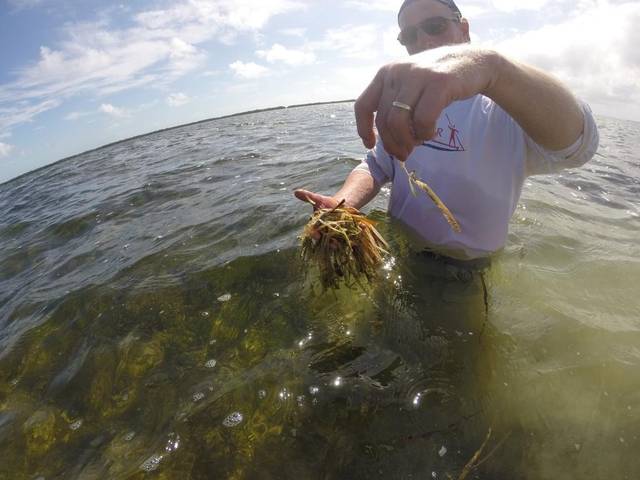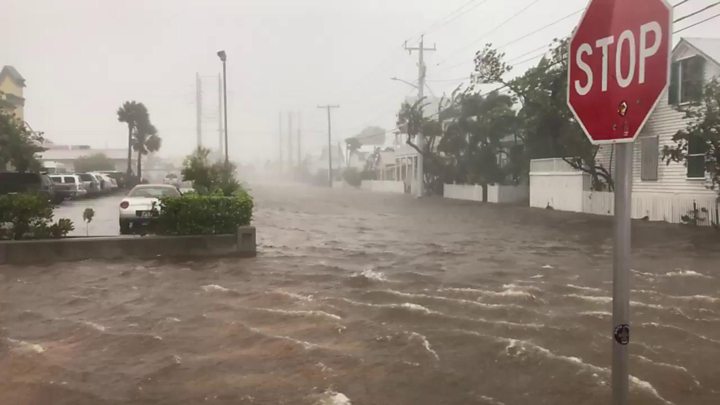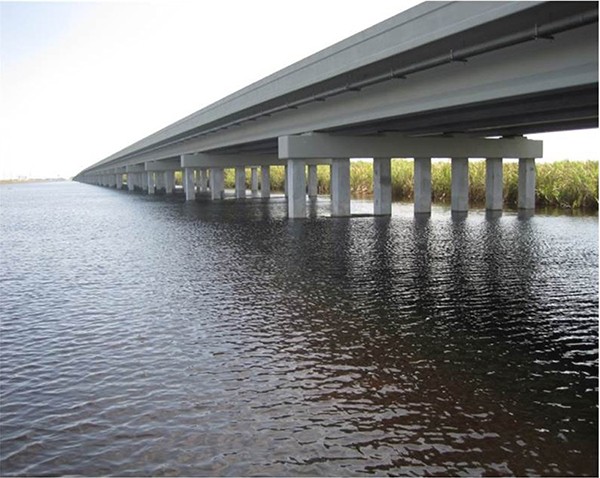
A dry 2015 triggers seagrass die-off in Florida Bay
A mass die-off of seagrass occurred in Florida Bay in 2015. Thousands of acres of seagrass meadows, up to 20 percent of the total, died abruptly leaving entire basins denuded and carpeted with decaying biomass. The event echoed a major die-off that occurred in Florida Bay in 1987. Except, this time water managers had a greater understanding of what was happening based on previous research into the causes of the 1987 die-off and monitoring data that allowed a timely assessment of current conditions in the ecosystem. Therefore, managers were able to act quickly to limit the lasting impact of the 2015 die-off event.

Hurricane Irma leaves a legacy of destruction along the southwest coast
On September 10, 2017, Hurricane Irma grazed Florida Bay and the southwest mangrove coast before making landfall a final time at Marco Island. Hurricanes are part of the natural cycle in South Florida, and the Everglades’ ecosystems are resilient to their effects. Signs of ecological recovery from Hurricane Irma appeared in the first months following the storm. Recovery from past hurricanes provides insights into what to expect following Irma. However, Irma’s full impact will play out over an extended period of time. Therefore, a complete assessment of Irma’s impact on the Everglades must wait until the 2024 System Status Report.

Mod Waters test-drives increased water deliveries to Everglades Park
Authorized in 1989, the Mod Waters project is one of the first Everglades restoration projects. Its goal is to increase the flow of water across Tamiami Trail into Everglades National Park and Florida Bay. Implementation has been delayed several times, but major progress has been made since the 2014 System Status Report with the recent completion of several new facilities, such as elevation of Tamiami and flood protection for the 8.5 Square Mile Area. Operational tests are now underway to maximize flow into the Park. Therefore, the beneficial hydrologic changes anticipated from Mod Waters are beginning to materialize.

Wet winter in 2015 launches spring algal bloom in the St. Lucie Estuary
A wetter than normal winter created conditions in May 2016 for an explosive plankton bloom in Lake Okeechobee. High lake levels required water to be discharged into the northern estuaries, and this initiated a second large bloom in the St. Lucie estuary. Algal blooms can appear in any body of water at any time under the right environmental conditions. But, the blooms that occurred in the spring of 2016 caused exceptional problems. Several factors combined to magnifying the size and intensity of the blooms. Therefore, restoration efforts target these factors with the goal of reducing the size and intensity of blooms when they occur.
